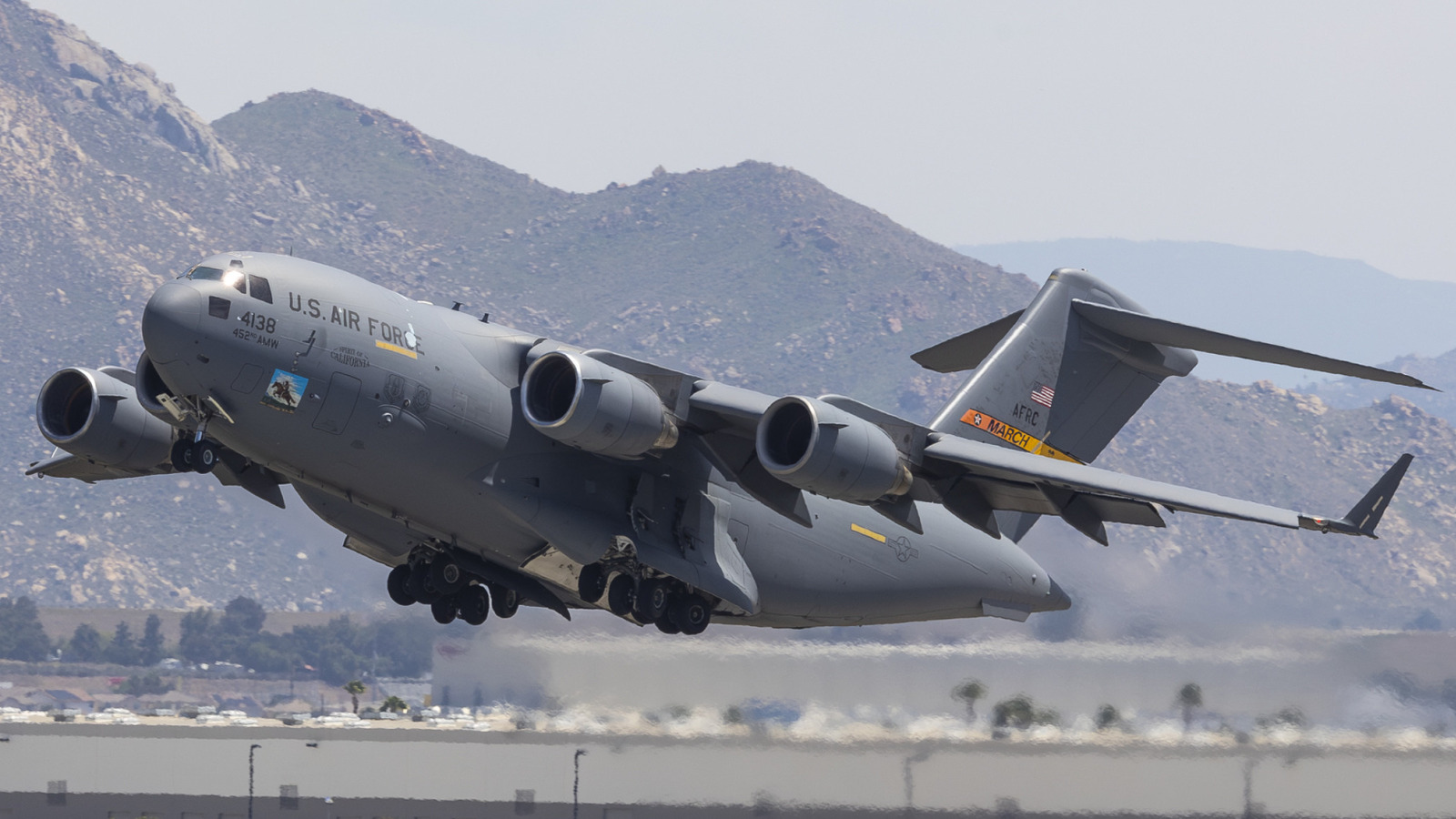Boeing is reportedly considering resuming production of its C-17 Globemaster III jet, discontinued in 2015. That’s going to be quite a trick since the Long Beach, California factory that made the plane has long been shuttered and is currently for sale. That said, some of the equipment and assembly lines might be salvaged and relocated to a new facility, which raises the question of why the supersized cargo hauler was discontinued to begin with.
Few jets besides the Lockheed C-5M Galaxy can match the C-17’s 164,000-plus-pound cargo capacity or its range of 6,230 nautical miles when empty. However, the C-17 has an advantage over the C-5M Galaxy because of its more compact footprint, which allows landings on remote, undeveloped runways as short as 3,000 feet. Its brace of four Pratt & Whitney turbofan engines make 40,440 pounds of thrust each. Converting that thrust figure to horsepower, we come up with about 223,444 horsepower at the jet’s cruising speed of 450 knots (518 mph). The contents of the C-17’s voluminous cargo hold could range from humans to military vehicles like tanks and helicopters.
It’s ironic that recent conflicts like Russia’s war against Ukraine and flare-ups in the Middle East have rekindled interest in the C-17, because most of the reason it was discontinued was lack of demand. That’s not unlike the fate of another famously large aircraft, the Boeing 747 passenger jet, which is mostly gone from commercial flight except for these airline holdouts.
The C-17 also was a victim of budget cuts
Development of the C-17 was begun in the 1980s by McDonnell Douglas, which Boeing later acquired. Test flights commenced in 1991 and by 1995, the first squadron was declared operationally ready. Fast forward to 2013, by which time the U.S. Air Force’s entire purchase order was complete, although a few international buyers’ planes had yet to be completed.
Meanwhile, the 2011 Budget Control Act led to significant cuts in U.S. defense spending that weren’t ideal for the future of the C-17, which was expensive both to purchase and maintain. For example, charging $151,000 for soap dispensers that should have cost about $2,000. The Department of Defense put it blandly in its 2010 budget request: “DOD does not need additional C-17 aircraft. Therefore we are ending production under this program.”
Boeing manufactured a total of 279 C-17 Globemaster III aircraft, and the company says 275 of them are still in service. The Air Force is the largest operator, with 223, while the remainder are scattered all over the globe. In 2003, the C-17 inserted almost 1,000 soldiers at once via parachute during Operation Iraqi Freedom. Besides combat missions, the C-17 also aided humanitarian relief efforts with cargo like food and medical supplies following natural disasters in Japan, Haiti, and other locations.


